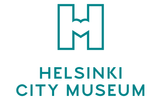Helsinki City Museum has been recording Helsinki residents’ life and phenomena for 110 years now
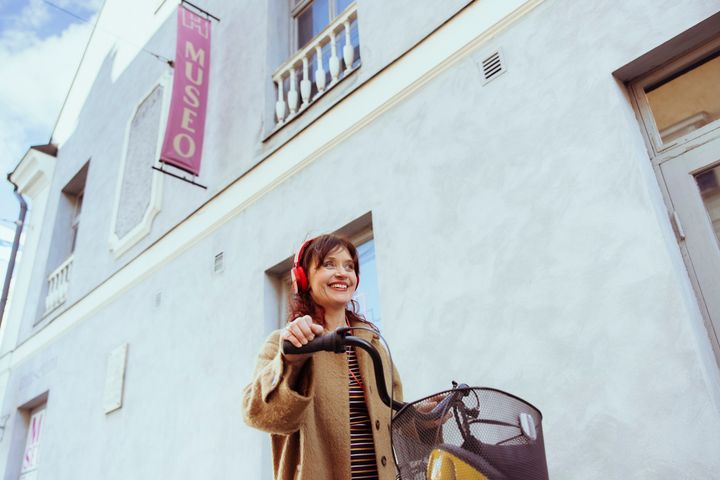
This year marks the 110th anniversary of Helsinki City Museum’s operations. The City Museum’s basic duty is to preserve Helsinki’s cultural heritage, and the core of that duty has remained relatively unchanged, even though the forms and tools of the work have gone through changes. The Museum has retained its popularity in the hearts of Helsinki residents. The renewed City Museum broke its visitor record four years in a row after reopening at the corner of the Senate Square in 2016. In 2018, it was the most popular museum in Finland in terms of the number of visitors. After the renewal, the City Museum and its affiliated museums have had an impressive 1.8 million visits. There are also four other museums in the museum family of the City Museum: Villa Hakasalmi, Burgher’s House, Worker Housing Museum and Tram Museum. In 2017, the Finnish Museum Association and the Finnish committee of ICOM selected Helsinki City Museum as Museum of the Year, and the Museum was also selected as the winner of the international series of the Museums + Heritage Awards competition the same year. In 2018, Helsinki City Museum was awarded a Special Commendation in the international European Museum of the Year competition.
The Museum as a source of well-being and a facilitator of resident-oriented operations
The City Museum records and studies Helsinki and life in Helsinki. The collections feature items ranging from plastic bags to square pianos and from works of art to trams – and a treasure trove of a million photographs from Helsinki. The Helsinkiphotos.fi service already features more than 65,000 photographs that can be browsed and used free of charge. In addition to old items and photographs, documenting modern times is equally important. The Museum’s researchers and photographers document today’s phenomena and various events, as well as changing and disappearing objects. Experiences during the coronavirus pandemic are being recorded in the collections diversely. For example, the Everyday Strangeness online exhibition produced in collaboration with HAM Helsinki Art Museum currently features a selection of more than a hundred photographs.
“Everyone’s efforts are needed in recovering from the year of the coronavirus. Museums have a role as sources of well-being and facilitators of participation and resident-oriented operations. Helsinki City Museum serves as the Central Uusimaa Provincial Museum, so we are also carrying out our duty of promoting museum work more extensively. I have a strong vision of museums being part of a solution towards a better future,” says Museum Director Reetta Heiskanen.
“First and foremost, the City Museum is a museum for the people, and our work has a lot of social capital for the processing of socially important topics, such as identity questions. Helsinki’s vision is that its residents’ cultures are what makes the city thrive. Every Helsinki resident must be able to be proud of their own culture, background and residential area. The work of the Museum to strengthen communities and rising phenomena can, for example, help new residents put down roots. In our plans for the coming years, we are examining the possibilities of regional work, as well as aspects such as whether there is a need to develop a model for positive special treatment to support equality in cultural services as well,” Heiskanen continues.
The cultural environment programme opens eyes and increases appreciation for residents’ own environment
Helsinki has a rich architectural heritage, and cultural environments from different eras are our shared treasure. In addition to the Empire-style centre and art nouveau buildings, there are many important sites in 1950s suburbs and 1980s shopping centres, for example – not to mention the archaeological cultural heritage. One of the duties of the City Museum is to make sure that buildings of different ages and distinct districts are preserved for posterity. The work is being carried out in collaboration with other authorities and stakeholders. This shared duty requires a cultural environment programme that details how the valuable cultural environments are to be taken into consideration and preserved, and also utilised as a resource as the city grows and becomes denser.
The cultural environment programme was launched in 2020 and will be completed in late 2022. Among other things, the objective of the programme is to convey information concerning the cultural environment and help people identify its special characteristics. Cultural environments can be utilised in operations such as developing the image of a city district, promoting residents’ independent activities and cultural environment education. The programme aims to create an urban planning tool that can be used to reduce antagonism and increase mutual understanding. The work is also being carried out with residents by surveying their relationship with the cultural environments of Helsinki, and by sparking interest in the use, maintenance and preservation of people’s own residential areas and Helsinki in general.
“The importance of the local environment has been highlighted in these exceptional circumstances. People have a great yearning for meaningful experiences, which they can also find in cultural environments. People now see urban environments and landscapes with a new set of eyes while also gaining more interest in their history. At the Museum, this has been evident in aspects such as a clear increase in the demand for information services related to how Helsinki has been built. Independent district tours and architecture walks, as well as bike trips to interesting locations and nature trails, have increased people’s appreciation for cultural environments, and people are also downright proud of their home region by the versatile and temporally multi-layered cultural environments of Helsinki,” says Project Manager Sari Saresto, who is in charge of the cultural environment programme.
Anniversary bus to delight Helsinki residents
To celebrate the 110th anniversary, a bus is taped with the City Museum’s celebratory pastel colours on Helsinki Region Transport route 500 between Itäkeskus, Pasila and Munkkivuori. The sides of the bus will feature characters from history to the present day, delighting Helsinki residents in traffic until the end of 2021.
Keywords
Contacts
Helsinki City Museum, Reetta Heiskanen, museum director, reetta.heiskanen@hel.fi, +358 (0)40 615 2527
Helsinki City Museum, Sari Saresto, project manager of the cultural environment programme, sari.saresto@hel.fi, +358 (0)50 375 6846
Images
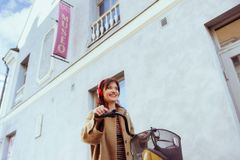
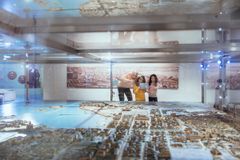
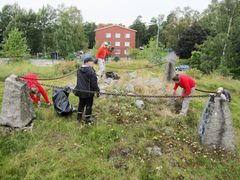
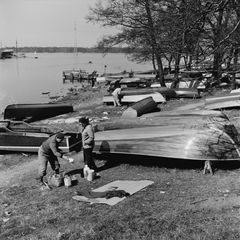
Links
About Helsingin kaupunki, kulttuurin ja vapaa-ajan toimiala
The Helsinki City Museum is the world’s only museum focusing on Helsinki. Personal experiences and everyday life of people in Helsinki are highlighted and reflected in the museum’s items and photographs. A Kiss-kiss candy wrapper, a squeaky steel spring bed and a photo of a suburb home yard are precious treasures in the museum.
The Helsinki City Museum is located in the oldest blocks of the city near the Senate Square, and entrance is always free of charge. In the City Museum, everyone has the opportunity to fall in love with Helsinki. Helsinki City Museum also serves as the Central Uusimaa Regional Museum.
Subscribe to releases from Helsingin kaupunki, kulttuurin ja vapaa-ajan toimiala
Subscribe to all the latest releases from Helsingin kaupunki, kulttuurin ja vapaa-ajan toimiala by registering your e-mail address below. You can unsubscribe at any time.
Latest releases from Helsingin kaupunki, kulttuurin ja vapaa-ajan toimiala
Ennakkotiedote: Kulttuuri- ja vapaa-aikalautakunnan kokous 16.12.202511.12.2025 12:11:19 EET | Tiedote
Helsingin kaupungin kulttuuri- ja vapaa-aikalautakunnan kokouksen 16.12.2025 esityslista on julkaistu. Lautakunta päättää muun muassa toimialan toimintasuunnitelmasta ja tulosbudjetista vuodelle 2026 ja Maailman rauha -patsaan lainaamisesta Rautavaaran kunnalle.
Grattis till Kulturens fadderbarn – Finlands nationalopera och -balett är fadderaktör för barn födda i Helsingfors år 202610.12.2025 09:00:00 EET | Pressmeddelande
År 2026 erbjuds över tusen evenemang anordnade av omkring 30 konst- och kulturaktörer för Kulturens fadderbarn. De barn som föds i Helsingfors nästa år får Finlands nationalopera och -balett som sin fadderaktör. Det finns redan över 16 000 Kulturens fadderbarn i Helsingfors.
Onnittelut Kulttuurin kummilapsille – Suomen kansallisooppera ja -baletti on vuonna 2026 syntyvien helsinkiläisvauvojen kummitoimija10.12.2025 09:00:00 EET | Tiedote
Kulttuurin kummilapsille on vuonna 2026 tarjolla yli tuhat tapahtumaa, joista vastaa noin 30 taide- ja kulttuuritoimijaa. Ensi vuonna syntyvät helsinkiläisvauvat saavat kummitoimijakseen Suomen kansallisoopperan ja -baletin. Kulttuurin kummilapsia on Helsingissä jo yli 16 000.
Päätöstiedote: kulttuuri- ja vapaa-aikalautakunnan kokous 9.12.20259.12.2025 19:55:34 EET | Tiedote
Helsingin kaupungin kulttuuri- ja vapaa-aikalautakunnan 9.12.2025 kokouksen päätöstiedote on julkaistu.
Ennakkotiedote: Kulttuuri- ja vapaa-aikalautakunnan kokous 9.12.20255.12.2025 08:12:06 EET | Tiedote
Helsingin kaupungin kulttuuri- ja vapaa-aikalautakunnan kokouksen 9.12.2025 esityslista on julkaistu. Lautakunta päättää mm. kulttuurin ja vapaa-ajan toimialan vuoden 2026 tulosbudjetista ja toimintasuunnitelmasta.
In our pressroom you can read all our latest releases, find our press contacts, images, documents and other relevant information about us.
Visit our pressroom